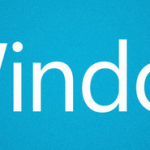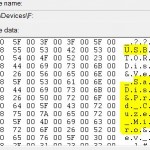When connecting and attaching a USB mass storage device such as portable hard disk drive and external SSD drive, or some other USB device to a Windows 10 PC before the device is turned on, the system may stop the booting up process and the computer hangs after the BIOS splash screen when powering up, without ever going to Windows 10 desktop.
The issue of computer’s boot failure to start up when an USB device, especially portable USB hard disk drive, is connected to the USB port of the computer is common. The cause is probably due to wrong computer configuration, or some files on USB storage device or the USB device itself is interrupting the system boot procedure.
Here’s a few workarounds and resolutions that you can pursue to allow Windows 10 operating system to boot up properly, instead of stuck at a black screen.
Method 1: Unplug & Unconnect the USB Device
If you’re not trying the boot from the external USB hard disk drive, you can simply unplug all USB devices from their ports, allowing the computer to boot up successfully when turning on the system. After Windows 10 startup completes and you come to desktop, you can then plugin in the USB devices again.
This workaround does not really resolve the boot failure issue, however it’s a quick and easy way to immediately able to use the PC.
Method 2: Change Boot Order in the BIOS
Sometimes, the PC attempts to boot from CD/DVD or USB drive first, prior to internal hard disk drive. If the USB mass storage device that you connected is not probably set up for booting up the computer, the boot up process may just frozen there. You can attempt to change the boot order of various devices in BIOS (Basic Input Output System) so that internal hard disk drive is preferred as first boot device and has first boot priority.
To enter BIOS, you can open Settings -> Update & Security -> Recovery, and select Restart now button under Advanced startup. Windows will load recovery console on reboot, and you can access BIOS from Troubleshoot -> Advanced Options -> UEFI Firmware Settings.
Method 3: Disable USB Legacy / USB Emulation Support
Older computers have an option which normally named as Legacy USB Support or USB Legacy Devices or USB Emulation in the BIOS. Legacy USB support or USB emulation provides hot-plugging USB functionality in environments which do not support USB natively i.e. without running operating system drivers such as at Power On Self Test (POST), ROM-based Setup Utility and Diagnostics. Unlike modern computers which have full USB support by default, older computers requires a system ROM that includes Legacy USB and USB emulation functionality in order to work correctly. Legacy USB support or USB emulation is known to cause system to hang on boot when an external USB hard drive device is connected, as USB support is now available before Windows loads itself, yet USB device itself is not fully supported by just BIOS.
Legacy USB Support or Legacy USB Devices or USB Emulation can be disabled in BIOS. Ways to enter BIOS and BIOS configuration menu to diable Legacy USB varies among older computers. Do check the manufacturer’s manual on more details on how to change BIOS configuration.
Method 4: Ensure that USB Device Is Not Damaged
Sometimes USB device that cause all the issue may have been partially broken, such as damaged USB controller or bad firmware, causing it to send erratic signal to computer or simply cause incompatibility. Or it may be just not conform to USB standard. Bring the USB device to another computer to ensure that it doesn’t cause the similar problem.
Method 5: Remove Problematic Files on USB Drive
The boot process of computer may also interrupted by problematic files located on the external USB hard drive, especially those that are auto-executable. Removing these files may resolve the issue that the PC not booting up when the USB device is connected. These files are normally hidden from view. To view hidden files, open View tab in File Explorer or Windows Explorer, and select Options. Then in “Folder Options”, go to View tab and select the radio button of Show hidden files, folders and drivers, and hit OK. Remove any suspicious files and unnecessary files that are located on the root folder of USB mass storage device.





